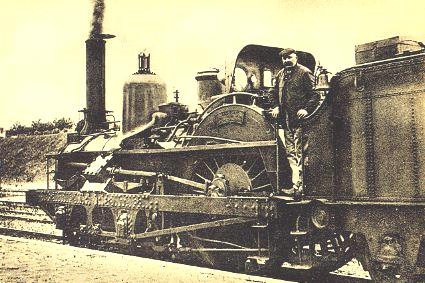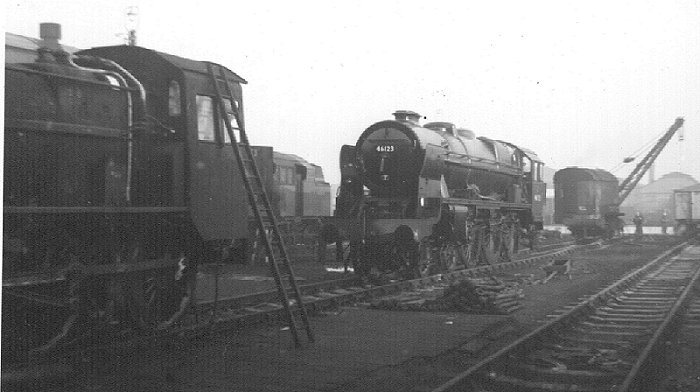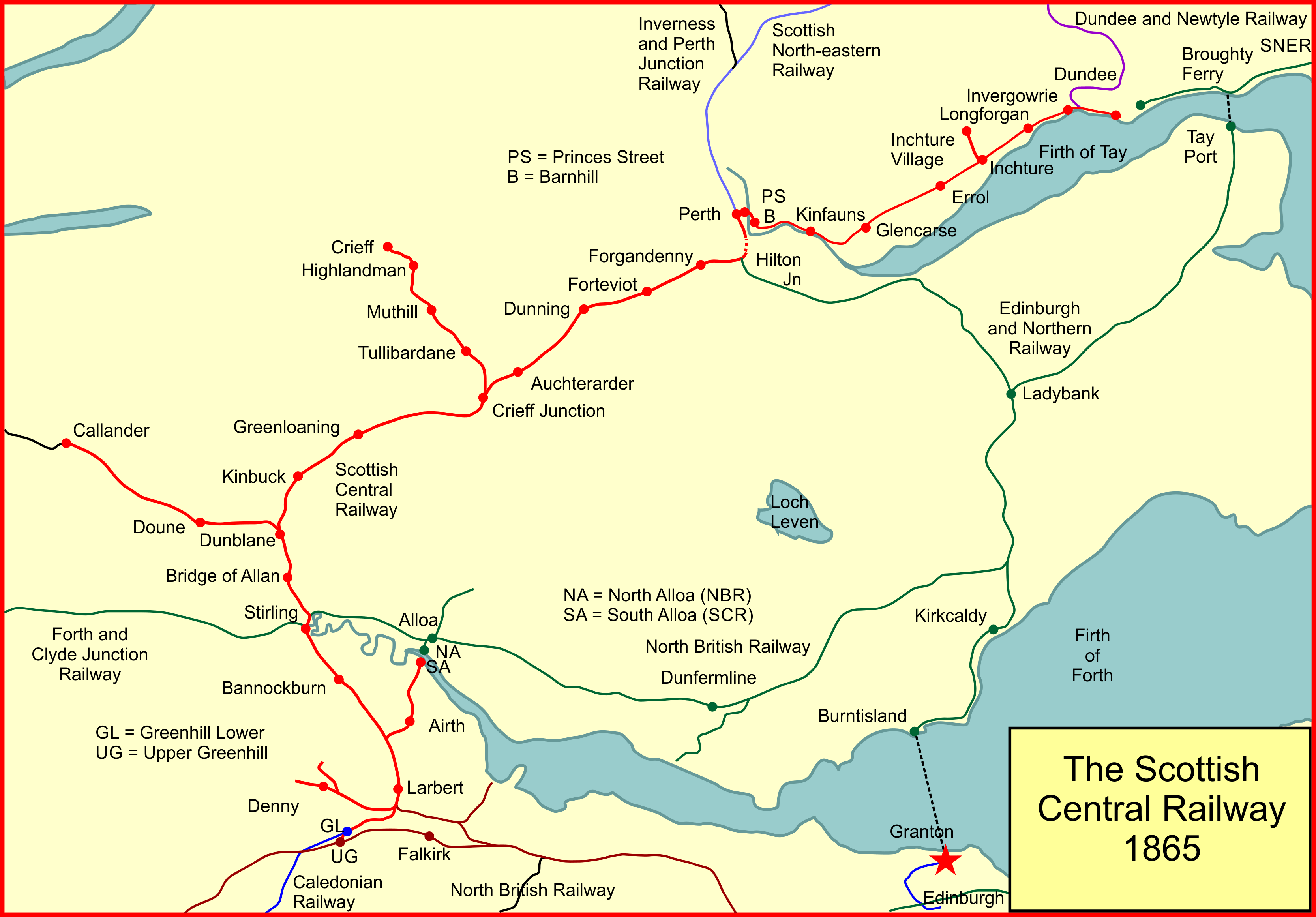|
Tulk And Ley
Tulk and Ley was a 19th-century iron mining company in west Cumberland which also ran an engineering works at Lowca near Whitehaven. Overview Established on the Lowca site in 1800 as "Heslops, Milward, Johnston & Co."- the engineering and ironfounding expertise coming from the brothers Adam, Thomas & Crosby Heslop, formerly associated with the Seaton ironworks- the firm was taken over by iron-mining firm Tulk, Ley & Co. about 1837. Ley was an absentee investor, the driving force behind the enterprise being engineer John Augustus Tulk. His decision to concentrate on finished goods rather than simple foundry products swiftly paid off, with orders for locomotives from the new Maryport and Carlisle Railway. The first two were a 2-2-2 and an 0-6-0, with a further 2-2-2 in 1843. They then built a number of 0-4-2 locos for various Northern railways. They also attempted to move into the shipbuilding business in 1842-3, producing ''Lowca'', the first iron ship ever launched in Cumberland ... [...More Info...] [...Related Items...] OR: [Wikipedia] [Google] [Baidu] |
Cumberland
Cumberland ( ) is a historic counties of England, historic county in the far North West England. It covers part of the Lake District as well as the north Pennines and Solway Firth coast. Cumberland had an administrative function from the 12th century until 1974. From 1974 until 2023, Cumberland lay within Cumbria, a larger administrative area which also covered Westmorland and parts of Yorkshire and Lancashire. In April 2023, Cumberland will be revived as an administrative entity when Cumbria County Council is abolished and replaced by two Unitary authorities of England, unitary authorities; one of these is to be named Cumberland (unitary authority), Cumberland and will include most of the historic county, with the exception of Penrith, Cumbria, Penrith and the surrounding area. Cumberland is bordered by the historic counties of Northumberland to the north-east, County Durham to the east, Westmorland to the south-east, Lancashire to the south, and the Scotland, Scottish counties ... [...More Info...] [...Related Items...] OR: [Wikipedia] [Google] [Baidu] |
South Eastern Railway (UK)
The South Eastern Railway (SER) was a railway company in south-eastern England from 1836 until 1922. The company was formed to construct a route from London to Dover. Branch lines were later opened to Tunbridge Wells, Hastings, Canterbury and other places in Kent. The SER absorbed or leased other railways, some older than itself, including the London and Greenwich Railway and the Canterbury and Whitstable Railway. Most of the company's routes were in Kent, eastern Sussex and the London suburbs, with a long cross-country route from in Surrey to Reading, Berkshire. Much of the company's early history saw attempts at expansion and feuding with its neighbours; the London Brighton and South Coast Railway (LBSCR) in the west and the London, Chatham and Dover Railway (LCDR) to the north-east. However, in 1899 the SER agreed with the LCDR to share operation of the two railways, work them as a single system (marketed as the South Eastern and Chatham Railway) and pool receipts: but ... [...More Info...] [...Related Items...] OR: [Wikipedia] [Google] [Baidu] |
Scottish Central Railway
The Scottish Central Railway was formed in 1845 to link Perth and Stirling to Central Scotland, by building a railway line to join the Edinburgh and Glasgow Railway near Castlecary. The line opened in 1848 including a branch to South Alloa. The line immediately became part of the forming trunk railway network in Scotland, and amalgamation with other railways was considered, and in 1865 the Scottish Central Railway amalgamated with the Caledonian Railway. The main line continues in use today as a major part of the Scottish Railway network carrying frequent passenger services and a significant freight traffic. History Conception In earlier years Perth had been an important trading town, but in the 1830s its significance was being overshadowed by the cities of central Scotland. There were short local railways in the area around Dundee, but connection to the emerging network further south, and potentially in England, seemed to be essential, and proposals were put forward from 184 ... [...More Info...] [...Related Items...] OR: [Wikipedia] [Google] [Baidu] |
Bury, Curtis, And Kennedy
Bury, Curtis and Kennedy was a steam locomotive manufacturer in Liverpool, England. Edward Bury established the works in 1826, under the name Edward Bury and Company. He employed James Kennedy as foreman; Kennedy later became a partner. About 1828, the firm moved to bigger premises in Love Lane, Liverpool, known as the Clarence Foundry. Locomotives Their first engine was built in 1830. Called ''Dreadnought'', it ran on the Liverpool and Manchester Railway. It was objected to because it was on six wheels and was sold to the Bolton & Leigh Railway. The second, the four-coupled ''Liverpool'', later in 1830, used a cranked driving axle, and was also objected to (by George Stephenson) because the 6 ft diameter wheels were too big. The Bury type However, they refined their designs and the resulting and locomotives quickly became a standard which was emulated by many other manufacturers, becoming known as the "Bury type". Distinguishing features of these engines were inside ... [...More Info...] [...Related Items...] OR: [Wikipedia] [Google] [Baidu] |
6-2-0
In the Whyte notation, a 6-2-0 is a railroad steam locomotive that has an unpowered three-axle leading truck followed by a single powered driving axle. This wheel arrangement is associated with the Crampton locomotive type, and in the USA the single class were sometimes referred to as ''Cramptons''. Other equivalent classifications are: UIC classification: 3A (also known as German classification and Italian classification) French classification: 310 Turkish classification: 14 Swiss classification: 1/4 History The 6-2-0 was a most unusual wheel arrangement, where the bulk of the locomotive's weight was on the unpowered leading wheels rather than the powered driving wheels, therefore giving poor adhesion. The type was only practicable on the Crampton locomotive with a low boiler and large driving wheels placed behind the firebox. United Kingdom The only British 6-2-0 was the locomotive ''Liverpool'' built in 1848 by Bury, Curtis, and Kennedy for the London and North Western ... [...More Info...] [...Related Items...] OR: [Wikipedia] [Google] [Baidu] |
Crewe Works
Crewe Works is a British railway engineering facility located in the town of Crewe, Cheshire. The works, which was originally opened by the Grand Junction Railway in 1840, employed around 7,000 to 8,000 workers at its peak. In the 1980s, a lot of the engineering works were closed. Much of the site has been redeveloped but the remaining parts are owned and operated by French-owned multinational rolling stock manufacturer, Alstom SA. During the late 19th century, the London and North Western Railway used Crewe Works to produce many famous locomotives such as the Webb Jumbo class and the compounds, the Whale Experiment and Precursor classes, and the Bowen-Cooke Claughtons. In particular, Whale's 1912 superheated G1 Class developed from a locomotive introduced by Webb in 1892, lasted, in many cases until 1964, near the end of steam in 1968. After grouping, the works were taken over by London, Midland and Scottish Railway which was the successor to the LNWR. It was during ... [...More Info...] [...Related Items...] OR: [Wikipedia] [Google] [Baidu] |
Sheffield, Ashton And Manchester Railway
The Sheffield, Ashton-under-Lyne and Manchester Railway was an early British railway company which opened in stages between 1841 and 1845 between Sheffield and Manchester via Ashton-under-Lyne. The Peak District formed a formidable barrier, and the line's engineer constructed Woodhead Tunnel, over long. The company amalgamated with the Sheffield and Lincolnshire Junction Railway and Great Grimsby and Sheffield Junction Railway companies, together forming the Manchester, Sheffield and Lincolnshire Railway in 1847.George Dow, ''Great Central: volume I: The Progenitors, 1813–1863'', Locomotive Publishing Co Ltd, London, 1959, , page 84 In the twentieth century the line carried an exceptionally heavy freight traffic, and it was electrified in 1954; at that time a new Woodhead Tunnel was driven. In 1974 the major part of the route was closed to passenger trains, leaving passenger operation continuing only on the Manchester– Hadfield section, and in 1981 the line east of Hadfield ... [...More Info...] [...Related Items...] OR: [Wikipedia] [Google] [Baidu] |
D&P&AJR
The Scottish Central Railway was formed in 1845 to link Perth and Stirling to Central Scotland, by building a railway line to join the Edinburgh and Glasgow Railway near Castlecary. The line opened in 1848 including a branch to South Alloa. The line immediately became part of the forming trunk railway network in Scotland, and amalgamation with other railways was considered, and in 1865 the Scottish Central Railway amalgamated with the Caledonian Railway. The main line continues in use today as a major part of the Scottish Railway network carrying frequent passenger services and a significant freight traffic. History Conception In earlier years Perth had been an important trading town, but in the 1830s its significance was being overshadowed by the cities of central Scotland. There were short local railways in the area around Dundee, but connection to the emerging network further south, and potentially in England, seemed to be essential, and proposals were put forward from 184 ... [...More Info...] [...Related Items...] OR: [Wikipedia] [Google] [Baidu] |
LNWR
The London and North Western Railway (LNWR, L&NWR) was a British railway company between 1846 and 1922. In the late 19th century, the L&NWR was the largest joint stock company in the United Kingdom. In 1923, it became a constituent of the London, Midland and Scottish (LMS) railway, and, in 1948, the London Midland Region of British Railways: the LNWR is effectively an ancestor of today's West Coast Main Line. History The company was formed on 16 July 1846 by the amalgamation of the Grand Junction Railway, London and Birmingham Railway and the Manchester and Birmingham Railway. This move was prompted, in part, by the Great Western Railway's plans for a railway north from Oxford to Birmingham. The company initially had a network of approximately , connecting London with Birmingham, Crewe, Chester, Liverpool and Manchester. The headquarters were at Euston railway station. As traffic increased, it was greatly expanded with the opening in 1849 of the Great Hall, designed by ... [...More Info...] [...Related Items...] OR: [Wikipedia] [Google] [Baidu] |
4-2-0
Under the Whyte notation for the classification of steam locomotives, represents the wheel arrangement of four leading wheels on two axles, two powered driving wheels on one axle and no trailing wheels. This type of locomotive is often called a Jervis type, the name of the original designer. Overview The wheel arrangement type was common on United States railroads from the 1830s through the 1850s. The first to be built was the ''Experiment'', later named ''Brother Jonathan'', for the Mohawk and Hudson Railroad in 1832. It was built by the West Point Foundry based on a design by John B. Jervis. Having little else to reference, the manufacturers patterned the boiler and valve gear after locomotives built by Robert Stephenson of England. A few examples of Stephenson locomotives were already in operation in America, so engineers did not have to travel too far to get their initial ideas. In England, the was developed around 1840 from the 2-2-2 design of Stephenson's first Long B ... [...More Info...] [...Related Items...] OR: [Wikipedia] [Google] [Baidu] |
Sheffield, Ashton-under-Lyne And Manchester Railway
The Sheffield, Ashton-under-Lyne and Manchester Railway was an early British railway company which opened in stages between 1841 and 1845 between Sheffield and Manchester via Ashton-under-Lyne. The Peak District formed a formidable barrier, and the line's engineer constructed Woodhead Tunnel, over long. The company amalgamated with the Sheffield and Lincolnshire Junction Railway and Great Grimsby and Sheffield Junction Railway companies, together forming the Manchester, Sheffield and Lincolnshire Railway in 1847.George Dow, ''Great Central: volume I: The Progenitors, 1813–1863'', Locomotive Publishing Co Ltd, London, 1959, , page 84 In the twentieth century the line carried an exceptionally heavy freight traffic, and it was electrified in 1954; at that time a new Woodhead Tunnel was driven. In 1974 the major part of the route was closed to passenger trains, leaving passenger operation continuing only on the Manchester– Hadfield section, and in 1981 the line east of Hadfield ... [...More Info...] [...Related Items...] OR: [Wikipedia] [Google] [Baidu] |









